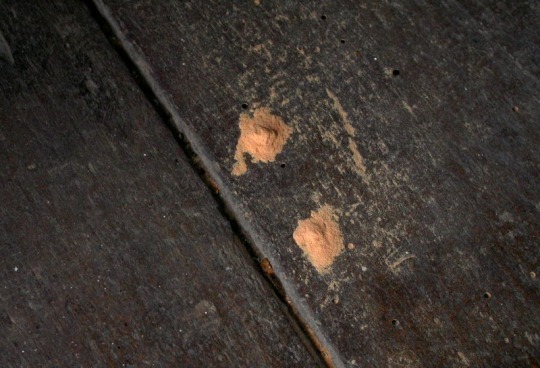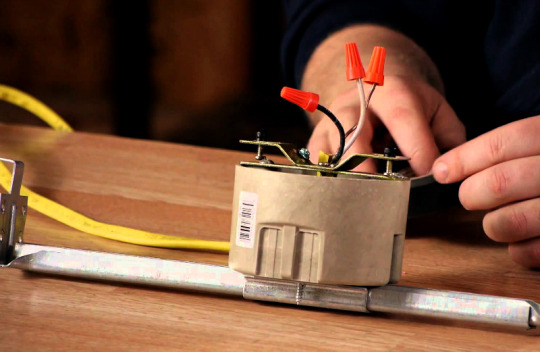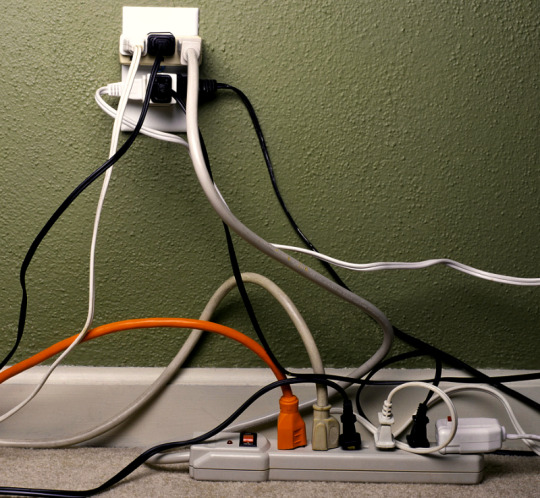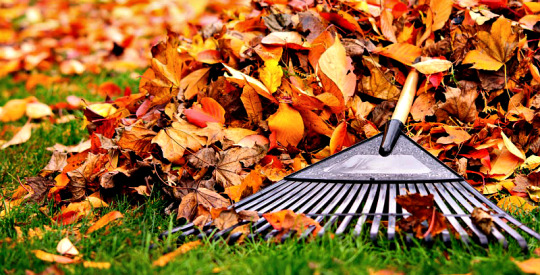Text
Preparing Your Home for the Fall Season in NH

You can feel it when you walk out the door--a crisp chill that starts sneaking its way into that warm summer breeze. Fall is coming. Pumpkins, apple cider and bonfires are just around the corner. And with the changing of the seasons, your home and yard are going to need a little attention to make sure they withstand the colder temperatures well. A few simple steps will help your home transition into the next season with ease.
The changing of the seasons is the perfect time to step back and take a good look at the results of the previous season.
Notice how your grass looks, and take note of any dead plants or spots that need some extra care.
Check for any dead trees, shrubs or spots on your walkways that need to be cleaned up. Don’t wait till things get too cold—preparing now can give your lawn a running head-start before the frosts come.
Grass & Lawn Care in NH
There are several types of grasses that do well when the temperatures start dropping. Sowing cool-weather grasses like fescue or rye 6 or 8 weeks before the temperature falls (right around now) gives the grasses a good chance to put down some sturdy roots.
Certain fertilizers are ideal to put down before the frost comes as well. Slow-release, selective nutrients can really boost the health of your grass in the seasons to come. Make sure you do your research on what kind of fertilizer you should use for your lawn. There are specific guidelines that can help you accomplish the feel and look that works best for your home.
Gutter Care & Maintenance

In New Hampshire, it’s essential to prepare your home for impending storms. Starting on the little things instead of waiting until they become big problems is a wise use of time and money. This year, take a look at your gutters.
Do you notice any leaks? Any problem areas that are consistently clogging?
Grab the ladder and make sure your gutters are clear of any leaves or sticks
Replace rusted or cracked gutters to freshen up your curb appeal and improve functionality.
Consider installing gutter caps to keep your drains clear as the leaves begin to fall. Gutter caps can help keep water running freely off your roof, and can extend the life of your gutters. They also protect the siding and integrity of your walls by keeping water and mold from building up. There are plenty of designs and options to choose from!
Roof Care Before the Winter Season
The roof of your house is probably the least considered area of your home, until something happens that forces you to repair or replace it. Be proactive this fall, and search for any areas that are discolored, sagging, or simply look differently than you remember.
When was the last time you had your roof inspected?
Did your heating bill rise last year, more than it should have?
Is your insulation old or worn out?
Taking steps now can improve the quality and value of your home significantly, and there’s no better time than the present.
For more tips on what your home might need, or to get a fresh perspective on how best to keep your home in tip-top shape, contact us. At WIN Home Inspection, we have the resources to help homeowners know just where they stand with their property.
Powered by Sprout.
0 notes
Text
Solving Shingle Problems: Attic Ventilation in NH

Have you been having problems with your shingles lately? Maybe you’re noticing the edges start to peel up or chip. This is a common shingle problem that occurs over time, and can often be fixed with a handful of replacement shingles, adhesive, and some roofing nails.
It’s a fact that, over the years, shingles weather and wear out. Between ice dams and roof shoveling, New Hampshire winters don’t help much. But there’s another factor that wears shingles out, and it’s much more subtle than a nor’easter...it’s heat damage.
How does heat damage my shingles?
We all know that shingles are exposed to direct sunlight for most of the day. We also know that heat rises in our homes. When hot air gathers in the highest place in your home and has nowhere to go, it superheats the interior of your attic. The combination of direct heat from sunlight and radiating heat from the attic can cause serious shingle damage over time.
Here’s how it works: heat causes asphalt shingles to break down, or “melt,” and then harden together. The more layers of shingles on your roof, the more heat is trapped, and the faster this breakdown happens.
In an effort to avoid the hefty price tag of a new roof, some homeowners instead opt to add on a fresh layer of shingles. But without proper attic ventilation, the lifespan of those new shingles gets cut in half, leaving your roof in worse shape than when you started.
In addition to damaging your shingles, all that trapped heat makes your house more expensive to keep cool in the summer. So, what can you do? You can’t stop the heat, but you can make sure your attic is properly ventilated.

Signs of a poorly ventilated attic
Do you have visible vents in the eaves of your roof, or along the ridgeline?
On a hot day, is your uppermost ceiling warm to the touch?
In the winter, do you have ice dams along the eaves? Trapped heat melts the snow in the corners of your roof, causing it to refreeze and form dams.
Is your attic air heavy and damp? Poor ventilation leads to trapped moisture.
If your home suffers from any of these symptoms, it’s very likely that you have improper attic ventilation. Although many homes have some form of attic vents, they can become blocked and ineffective if they aren’t regularly inspected.
If your attic is vent-free, don’t sweat it. You’re not in for a huge expense! Vent installation is a fairly painless fix when compared to the numerous benefits of a having a well ventilated attic space.
Attic Ventilation Inspections in Southern NH
Not sure if your attic has effective ventilation? Give us a call at 603-856-1445 to schedule an inspection. With a standard home inspection, we’ll be able to identify the quality of your attic ventilation so you don’t lose the value of your roofing investment, or spend too much keeping your home cool!
Powered by Sprout.
2 notes
·
View notes
Text
DIY Extermination for Wasps, Beetles & Carpenter Ants in NH

Has this happened to you yet this summer? You’re sitting outside in the shade enjoying the warm weather, when suddenly your “me time” is interrupted by loud buzzing. You see a shadow swoop down out of the corner of your eye. Before you know it, you’re doing funky dance moves to keep a giant wasp from landing on you.
Wasps do more than take our dignity away. They can damage and destroy wood, pose serious infestation issues in our homes and yards, and they can inflict painful personal damage. One classy New York Times article suggests that some wasps “sting as part of a devastating organized assault.” That’s just plain scary. How can a humble homeowner fight back against such a force? Before you call the exterminator, we have some basic, proven tips for you.
DIY Extermination for Wasps
Spray the nest heavily at night with an aerosol-based poison
Knock down and remove the nest after activity ceases.
Dust the surrounding area with a potent insecticide.
Paper wasps are common in New Hampshire, and they are just one of a number of insects that pose a hazard to your home. Powderpost beetles like to burrow into the cool, moist spaces of your home. They bore through both hard and soft woods, nesting inside the walls, floors, and framing. But never fear, there are ways to stop them in their tracks.
DIY Extermination for Powderpost Beetles

These guys like untreated wood. Prevent infestation by painting or finishing.
Replace damaged wood, and install a dehumidifier to keep things dry
Treat joists, sills, decking and wood siding with insecticides
And how could we leave out New England’s finest, carpenter ants? Similar to their powderpost cousins, these seasonal insects enjoy long walks through your framing and like to nest where it’s moist. You can usually tell a fresh infestation by small holes and loose sawdust around your baseboards or trim. Unless you have a severe infestation, these practices will usually do the trick.
DIY Extermination for Carpenter Ants

Set industrial ant baits in enclosed areas and around baseboards.
Sprinkle a powdered ant poison near infestation sites and enclosed spaces
Replace damaged areas and keep your wood finished and dry.
If you’re clearly losing the battle season after season, you might have a nest in your home. In that case, it’s best to call in an exterminator.
Not sure if you have insect damage in your home? Our inspectors know all the signs and symptoms. Give us a call at 603-856-1445 to be sure. We’re in the business of helping you increase the quality and value of your home.
Powered by Sprout.
#home inspection#home inspectors#nh home inspection#carpenter ants#powderpost beetles#wasps#extermination
3 notes
·
View notes
Text
5 Tips for servicing your furnace this summer

Servicing your furnace in NH
During the summer months, the last thing on most people’s minds is their furnace. You shut it down, close it up, and turn off the fuel valve. Done deal. Well, maybe not. Do you ever have a little trouble getting your furnace started up again in the winter, right when you need it most? Those pilot lights can be tricky, along with the other steps required for a safe startup.
There are lots of different types of furnaces, and many homeowners pay them hardly any attention...until they start acting up. Summertime is the perfect time to get a furnace tune-up. You can get those pesky issues fixed before you need the heat.
Common furnace maintenance issues
Many things can go wrong with an unmaintained furnace. It’s important that you know how to identify issues in your furnace early. It will save you money in the long run, and it’ll ensure that your family (and your heating system) are safe.
Check the power source, fuses, and wiring going to and from your furnace for any tears or fraying.
Dirty filters are the most common furnace maintenance issue. Hold the filter up to the light; if it looks clogged after cleaning, it should be replaced.
A weak blower reduces heating efficiency drastically. If your blower sounds like it’s straining or producing weak airflow, it’s time to have it serviced.
Clean intake vents and exhaust ducts. Constant airflow causes severe clogging over time.
Make sure the thermostat is in keeping with the actual temperature.
It’s always a good idea to replace the battery in your carbon monoxide meter every year. When you check your furnace this summer for maintenance issues, take note of anything you find that an HVAC specialist should know about. There are many more technical aspects to furnace inspections and maintenance, including cleaning the burners, blowing the condensate lines, checking the igniter and flame sensors, checking gas pressure, and more. If you’ve had issues with your furnace in the past, it’s best to hire an expert for inspections or services.
For a complete home inspection, including systems testing, contact WIN Home Inspection of Bedford, NH today. We provide thorough home inspections and can refer you to HVAC specialists to repair your furnace or heating system this summer.
Powered by Sprout.
#home inspection#nh#nh home inspectors#bedford nh#furnace tune up#heating system#furnace#servicing your furnace
1 note
·
View note
Text
Practicing Electrical Safety in Your Home

When it comes to electrical safety, DIY is usually not the best way to go. Unless you are a certified electrician or you have extensive knowledge of electrical systems, you should not attempt to do your own wiring.
Homeowners can end up creating fire hazards and other dangerous situations by harnessing electricity in unsafe ways.
Homemade Extension Cords with Romex Wiring
Homemade extension cords are one example of a potentially dangerous electrical practice. Oftentimes, homeowners with a basic knowledge of electrical wiring will try to make long range extension cords out of Romex wiring.
Romex wiring is a common type of wiring used in the home. It is a thickly insulated bundle of wires that contains a hot conducting wire, a neutral wire, and a ground wire. Romex wire can be spliced into existing wiring, and homeowners will sometimes use it to try to power a different circuit from one outlet to another.
This is dangerous in several different ways, but primarily because it creates the potential for shocks and electrical fires.
Romex wiring is not made to be bent and flexed like an extension cord is. Romex is made to lie flat and stationary.
It is dangerous to have a high voltage cable running throughout the house, as these homemade extension cords often do. The wire could get cut open and exposed, posing the risk for shock.
If the gauge of the Romex is not compatible with the existing wiring, it could cause arcs and short circuiting, creating a fire hazard.
Your Southern NH Home Inspectors
At WIN Home Inspection of Bedford, we want to provide you with timely homeowner tips that keep you safe and keep your home in great shape. Feel free to call us at 603-856-1445 with your questions, or schedule your home inspection today!
Powered by Sprout.
0 notes
Text
Spring Cleaning Tips for the Home

It’s that time of year again...spring cleaning! Every April, homeowners show their pride and spend the weekend cleaning, sorting, airing out, washing, and making their homes fresh as can be.
Some homeowners view this as a chore...but with these awesome spring cleaning tips, you’re guaranteed to have a fun and productive time making your house look great!
Use green cleaning products. This is the time most homeowners go all out with the home cleaning chemicals. Imagine the environmental difference it could make if everyone used clean, green products for their spring cleaning! Try cleaning your surfaces and bathrooms with vinegar and baking soda, or use an organic cleaning solution.
Take breaks. After every hour of intense cleaning, it does your body good to relax. Monotonous motions and straining to reach for things like window panes and book shelves can cause muscle tension and stress. Take a few minutes every hour or half hour to sit, stretch, and drink something cold!
Change it up. We all know the house needs cleaning, but what about your yard? Curb appeal is important for buyers, sellers, and proud homeowners alike. Alternate between indoor and outdoor cleaning. It will clear your head and keep you creatively engaged throughout spring cleaning!
Do the out-of-the-ordinary. We all know what spring cleaning is about, but it bears repeating...getting those hard-to-reach places! Don’t forget to dust staircases, fridges, and home decor. Vacuum under beds, couches, and appliances. Scrub tubs, tiles, and walls. Go the extra mile during spring cleaning.
Have fun! Do whatever it takes to make your spring cleaning a blast. Have friends over and buy pizza for lunch. Turn the music up loud. Keep the refreshments nice and cool.
At WIN Home Inspection, we take pride in homes of all types. A home is both an investment and a place to live life to the fullest. We hope you enjoy spring cleaning this year as much as we do! Contact us online or give us a call at 603-856-1445 to learn more.
Powered by Sprout.
#win home inspection#home inspection#nh home inspectors#bedford nh#nh#spring cleaning#house cleaning#spring time
0 notes
Text
4 Home Improvements With NH Tax Breaks

Did you know that certain home improvements can make you eligible for a variety of tax breaks? The federal and NH state government offers rebates, exemptions and tax credits for a range of energy-efficient home improvements.
Here are some of the many home improvements that provide tax exemptions:
Solar Systems. The NH Renewable Energy Property Tax Exemption provides substantial tax breaks for homeowners who invest in solar systems. Take a look at our previous blog on the subject of buying vs. leasing solar systems.
Insulation. There are numerous types of insulation to choose from, and certain types qualify you for a lifetime tax credit. Insulation ranges in quality and efficiency, and upgrading the insulation in your home benefits the environment and saves you money on your energy bill.
Doors and windows. If you install new doors, windows or skylights in your home, make sure they meet the Energy Star requirements. Not only will they keep either heat or cool air in your home all year round, but they also qualify you for the Energy Efficiency Tax Credit.
Heating systems. After the wear and tear of numerous winters, your furnace or heating system may be in need of an upgrade. Springtime is a great time of year to install a new heating system. Usage costs will be low until the late fall, allowing you to pay more towards the system throughout the year in addition to receiving a tax credit.
Energy Efficient home improvements are an investment in both your home and the environment. With tax incentives for water heaters, roofs, heat pumps, air conditioning and numerous other systems, increasing the value of your home has never been more rewarding.
Call WIN Home Inspection at 603-856-1445, or contact us online to learn more about the 2016 Federal Income Tax Credit for Energy Efficiency.
Powered by Sprout.
2 notes
·
View notes
Link
0 notes
Link
0 notes
Text
Solar Systems in NH: Buying vs. Leasing

When it comes to deciding between buying or leasing a solar system for your home in NH, the answer largely depends on your financial goals.
The main benefits of buying solar panels are:
Long-term savings with the benefit of eventual ownership
Reducing your federal & state tax liability
Business owners can receive additional tax benefits
Immediately increase the value of your home
The benefits of leasing solar panels are:
Ability to use renewable energy (not necessarily for the sake of your own financial benefits)
Repairs & maintenance are included in the lease
If you’re not eligible for any tax credit, leasing is the more attractive option
If you are eligible for tax credit, you won’t have to wait a year for these benefits to begin
Benefits of buying solar systems locally in NH
When you buy solar systems from a local NH company like Sunray Solar or Granite State Solar, you’re supporting the NH economy and getting a better deal in the long run. Solar systems are often sold with 12-year financing plans, and the monthly payments combined with your energy savings and tax credits makes buying the more attractive option for many people.
Large corporations offer numerous leasing options, usually with no money down and low installation costs. While leasing is a good way to have a solar system installed immediately, it often entails a 20-year contract. Most of the tax benefits go to the solar company as well. If you’re looking to begin using renewable energy immediately, however, leasing is a viable and fairly pain free option.
Solar systems increase the value of your home significantly. To learn more about the benefits of renewable energy, contact WIN Home Inspection Bedford at 603-856-1445.
Powered by Sprout.
0 notes
Text
4 Kitchen Safety Tips for New Year’s Eve

The kitchen is one the most popular places during New Year’s Eve parties.
The living room gets crowded, the dining room gets loud, but the kitchen has all the snacks and drinks! This New Year’s Eve, follow these essential kitchen safety tips while you cook...and have fun!
1.) Avoid distractions while cooking.
With other holiday activities going on in your home, it’s easy to get distracted and walk away from that hot oven. According to Liberty Mutual, 42% of surveyed consumers say they have left the kitchen to text or talk on the phone, and 35% use the computer to check their email while cooking. Don’t get distracted while you cook!
2.) Remain aware of the oven and stove tops while they’re in use.
Keep a close eye on the kitchen to ensure that the kids don’t get too close to the hot surfaces. Plus, you can keep an eye on the food to make sure it doesn’t burn.
3.) Check your smoke alarms.
We’ve all been there--you know you’ve burned the meal because the smoke alarms are all blaring at once! On the chance that you accidentally leave your goodies in the oven too long, make sure your smoke alarms are working before starting to cook. Replace the batteries or check them with the test button.
4.) Keep all flammable objects away from the stove.
Keep loose clothing such as scarves, aprons and ties away from the stove top! Keep flammable objects like oven mitts, plastic bags, or pot holders at a safe distance from hot surfaces.
Have a safe holiday season by following these kitchen safety tips! To learn more about home care and prevention, visit WIN Home Inspection today or call us at 603-856-1445.
Powered by Sprout.
1 note
·
View note
Text
Safety Tips for Extension Cords and Power Strips

Extension cords and power strips are very convenient, and we all use them frequently. After all, why spend time rearranging furniture just so the cord to your Christmas tree lights reaches the outlet, when instead you can just use an extension cord or a power strip? And with only two outlet sources in your wall and too many wires to count behind the TV, a power strip definitely comes in handy.
Power strips are used for efficiency and multitasking, but have you ever considered the safety hazards surrounding these devices? To avoid the common issues associated with extension cords and power strips, keep these safety tips in mind before you reach for that plug.
Do not overuse the power strip.
Avoid plugging in more than three appliances at a time into a power strip. Overuse of a power strip can lead to overheating, which can lead to a fire in your home.
Beware of the temperature of your power strip.
Make sure that your extension cords and power strips remain uncovered so that they have proper ventilation. Uncovering these devices will ensure that they work without overheating. If you notice that a power strip or an extension cord feels too hot, immediately unplug it.
Do not use extension cords as permanent wiring.
Avoid using too many extension cords. Have an electrician install more outlets in your home if you are relying heavily on extension cords. This will be safer and more efficient than overusing cords!
Use power strips and extension cords individually.
Never chain one extension cord together with another. This can result in too much current at a time entering through a single cord, which can be a serious fire hazard.

For more information on electricity tips and keeping your home safe, visit our website or call WIN Home Inspection today at 603-856-1445.
Powered by Sprout.
1 note
·
View note
Text
Roof and Gutter Maintenance for the Fall Season

November has arrived, which means that the leaves are falling on your roof and getting trapped in your gutters. As a homeowner, you’re faced with the challenge of preparing your house for the long winter months ahead.
Here are some home preparation tips that will help you get your home ready for the fast approaching winter:
Cleaning out your clogged gutters
It’s especially important to clean out your gutters in the fall so your roof can withstand the wear and tear of winter snow storms. Many roofs in New England sustain winter storm damage due to heavy snowfall. For this reason, it’s important to prepare and maintain your roof in the months before winter.
Did you know that clogged gutters are often the most common culprits of roof damage? Gutters can become clogged quickly, causing flooding, rot or other severe damage to your roof and home. Wear gloves to protect your hands as you clean out leaves, pine needles, and other debris. If your gutter is completely clogged, try using a hose to clear out the blockage.
Waterproofing your roof for the winter
Some homeowners waterproof their roofs before winter to prevent rain and snow damage. You can do this by applying a few layers of waterproofing sealant spray over the top of your shingles. You can also use a roller to roll the waterproofing compounds directly onto the shingles. Another option is to install waterproofing layers beneath the shingles when installing a new roof or repairing an old one. This is another great way of preparing your home for severe fall and winter storms.
Call WIN Home Inspection for your seasonal home care needs
Gutter and roof maintenance is particularly important during the fall and winter seasons. If you don’t feel confident climbing onto your roof or using a ladder to clean out your gutters, be sure to call a professional home inspection service to do the job. WIN Home Inspection offers these services and more.

Call WIN Home Inspection today at 603-856-1445 to learn more about fall home maintenance, and how you can best prepare your home for the winter!
Powered by Sprout.
1 note
·
View note
Link
Here are some great tips to help with your moving transition.
0 notes
Text
Lawn Reseeding and Fall Fertilizing

Reseeding my lawn in the fall?
It’s finally autumn. You look up and see the leaves are beginning to turn a vibrant orange and red color. Then you look down and discover that your lawn has turned a nasty brown color, complete with dried-out barren patches. Would you believe that now is the perfect time of year to reseed your lawn? Here are a few reasons you might want to seed your lawn during the fall season.
Why should I reseed my lawn?
Over time, grass begins to thin out and grow bare patches. Worn out lawns allow unwanted weeds to grow in place of fertile grass. Grass often needs reseeding because the thatch layer, which lies on top of the soil and contains decomposed grass clippings, stems, and roots, is too thick and is starting to carve out sections of your yard.
When should I reseed my lawn?
The best time of year to reseed your lawn in the north is during the fall. The air is cool, but the soil still remains warm. Putting down a layer of seed during the fall ensures that your thinning grass will grow throughout the colder season.
What are the benefits of reseeding my lawn?
A benefit of reseeding in the fall instead of during springtime is that there are fewer weeds in your lawn during the cooler months. During the fall, trees are losing their leaves, which allows sunlight to easily shine through branches, helping the seeds you planted to grow.
Reseeding is a guaranteed method of making sure that your beautiful green lawn remains healthy during the year, saving you the hassle of having to replace your grass and start from scratch. This fall season, be sure to reseed and fertilize in order to maintain your healthy and lush lawn throughout the coming cold season!
To learn more about home care and prevention, visit WIN today or call us at 603-856-1445.
Powered by Sprout.
0 notes
Text
Radon in Your Home: Facts and Myths

Radon is a topic that comes up a lot in the home inspection industry. While many homes have safe radon levels, the fact remains that radon is a dangerous gas that should be identified and addressed through regular home inspections.
Facts about radon:
Radon is a naturally occurring radioactive gas that comes from the breakdown of uranium deep in the soil. It is present in almost all rock, soil, and water in the world.
Approximately 20 million homes in the U.S. have elevated radon levels. That’s nearly 1 out of every 5 homes.
Radon causes lung cancer and kills almost 20,000 Americans every year.
Radon is colorless and odorless and can only be detected through specific radon tests.
Myths about radon:
“Any amount of radon can kill you.” This is not true, as radon is found in trace amounts almost everywhere. People have been breathing radon since the beginning of time. According to the EPA, acceptable radon levels are below 4.0 pCi/L (“picoCuries per liter,” a measurement of radiation levels per liter of air).
“Radon is only found in the air.” Radon gas rises through the soil and is usually diluted quickly into the surrounding air. However, radon can be found in hazardous amounts in well water, entering the home through faucets and showers and quickly becoming airborne.
“If my radon test comes up at safe levels, I’m all set.” Not true. There are at least a dozen factors that can affect radon tests, and there is certainly a margin for error. We take these factors into account before each test, and while the radon tests we perform are highly accurate, you can’t go wrong installing a permanent radon monitor such as an Alpha Track monitor or a Continuous Working Level Meter.
When it all boils down to it, you should never assume that your house is radon-free, or even has safe radon levels.
Radon tests are inexpensive and should be done regularly. Call us at 603-856-1445 to learn more, or schedule your home inspection today.
Powered by Sprout.
0 notes
Text
How to Deal with Carpenter Ants, Bees, and Ladybugs

Homeowners often ask how they can prevent damage caused by carpenter ants and carpenter bees. Here’s some helpful information to get you started:
Carpenter ants nest in moist areas where the wood has been softened by decay, and they usually avoid new or dry wood. Because carpenter ants don’t eat wood, severe infestation can be determined by small piles of wood shavings near the walls of your home. Carpenter ants typically seek out cracks in structural beams or hollowed areas to make their nests.
Frequent sightings of large worker ants in your home can be a sign of infestation, but that’s not always the case. Carpenter ants travel away from their nests to forage for food, and this is often why they end up in your home.
Here are some do-it-yourself remedies to get rid of carpenter ants:
Remove rotted wood from your property. Carpenter ants will often nest in these areas and forage for food in your home.
Use foam sealant to fill in cracks or gaps inside and outside your home. Filling in cracks will make it more difficult for ants to enter and nest in your structure.
Use non-repellent insect spray around the perimeter of your home. Non-repellent spray eliminates the ants, rather than just keeping them away.
Use non-repellent ant baits in high traffic areas. Similar to the spray, ants will walk through the bait and carry the poison back to their nest.
Carpenter bees are large and similar in appearance to bumble bees, except for their black shiny abdomens. They prefer to nest in unfinished wood that gets a lot of direct sunlight. Carpenter bees tunnel deeply into wood and can cause structural damage to homes, as they prefer to burrow in pine and other soft woods.
Treat tunnel entrances with insecticide. Although the entrances are small, you can typically find them by identifying areas where bees cluster outside your home.
Use caulking to fill in nest entrances. Seal off the tunnel entrances with caulking after spraying them with insecticide.
Treat unfinished wood with paint or sealant. The thicker and stronger the sealant, the more protected the wood will be against carpenter bees.
Lady bugs tend to infest homes to hibernate during the winter months, typically waking during early spring. They are harmless to people and to your home, but they can be a nuisance.
In the fall, ladybugs tend to find their way inside by searching for walls and windows in direct sunlight and entering through cracks or small spaces. They can be found in the same areas of our home year after year partly because of the direct sunlight, but also because pheromones alert them that other ladybugs have been there in the past.
Spray door and window frames with insecticide. Do this during the late summer and fall months to prevent ladybugs from entering.
Remove spring ladybugs with a vacuum cleaner. This is the most efficient way to eliminate ladybugs from your home.
Weatherstrip windows and doors. If there are any gaps in the weatherstripping, ladybugs tend to get through them.
Give us a call at 603-856-1445 to learn more about how to deal with carpenter ants, bees, and ladybugs. Visit our website, or request a home inspection.
Powered by Sprout.
0 notes